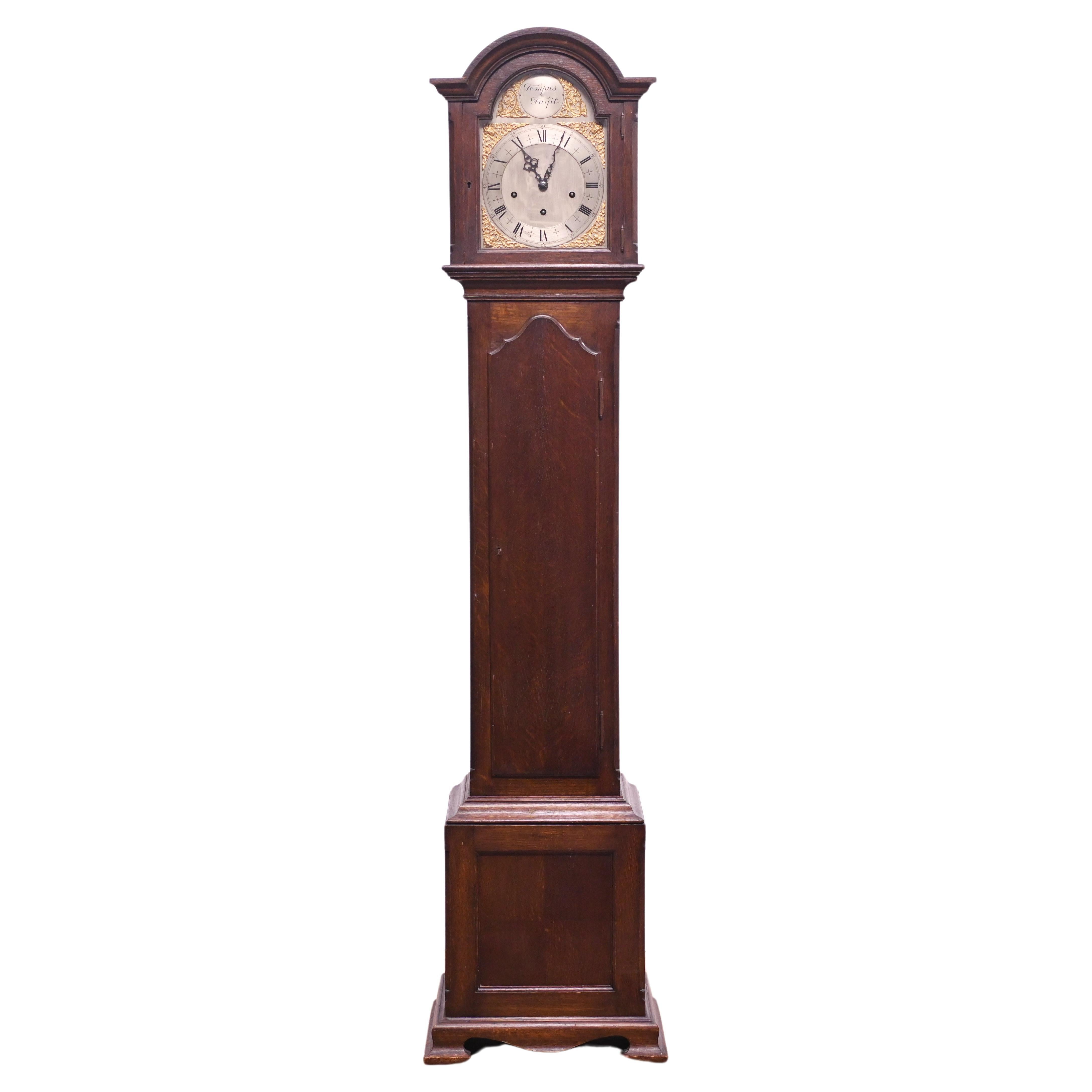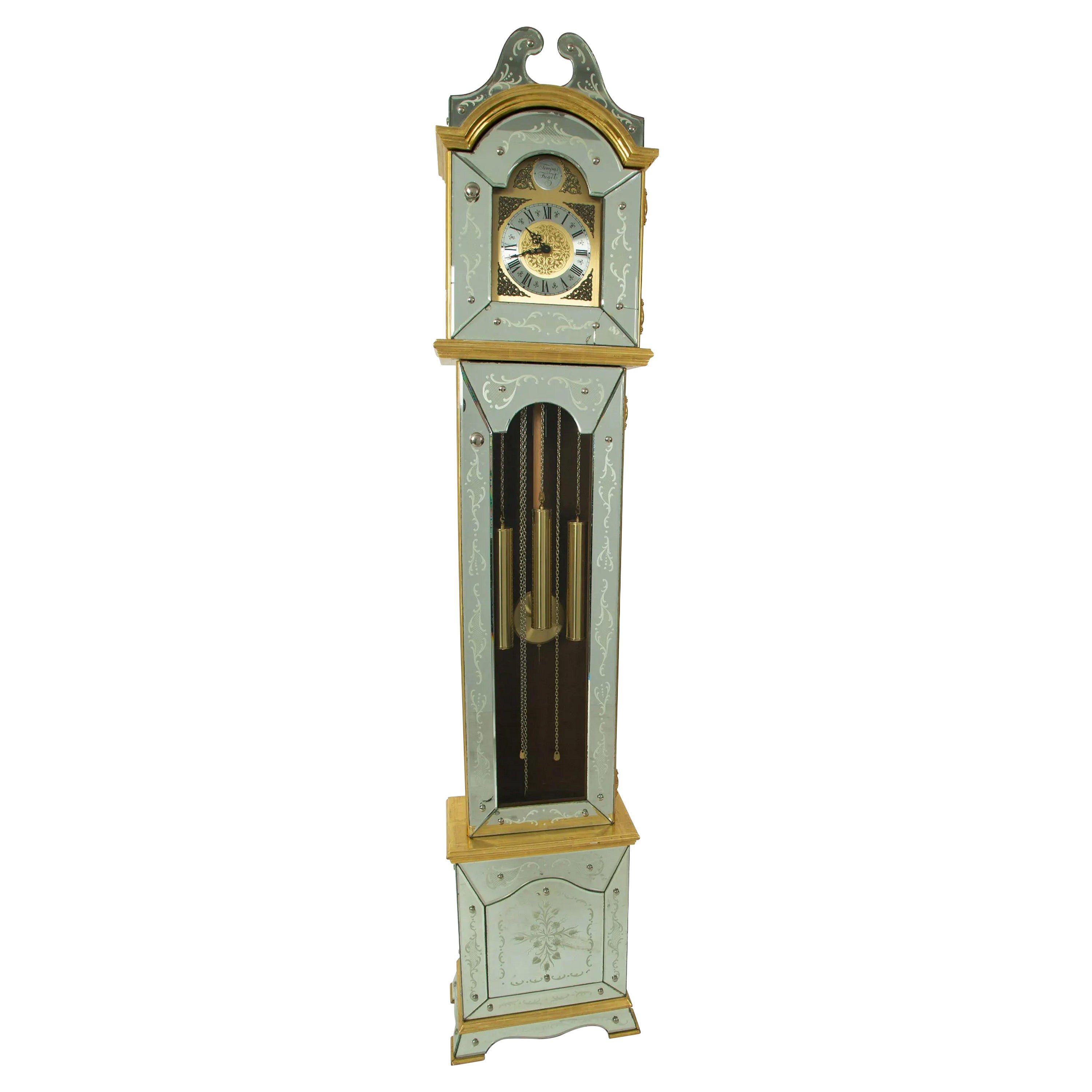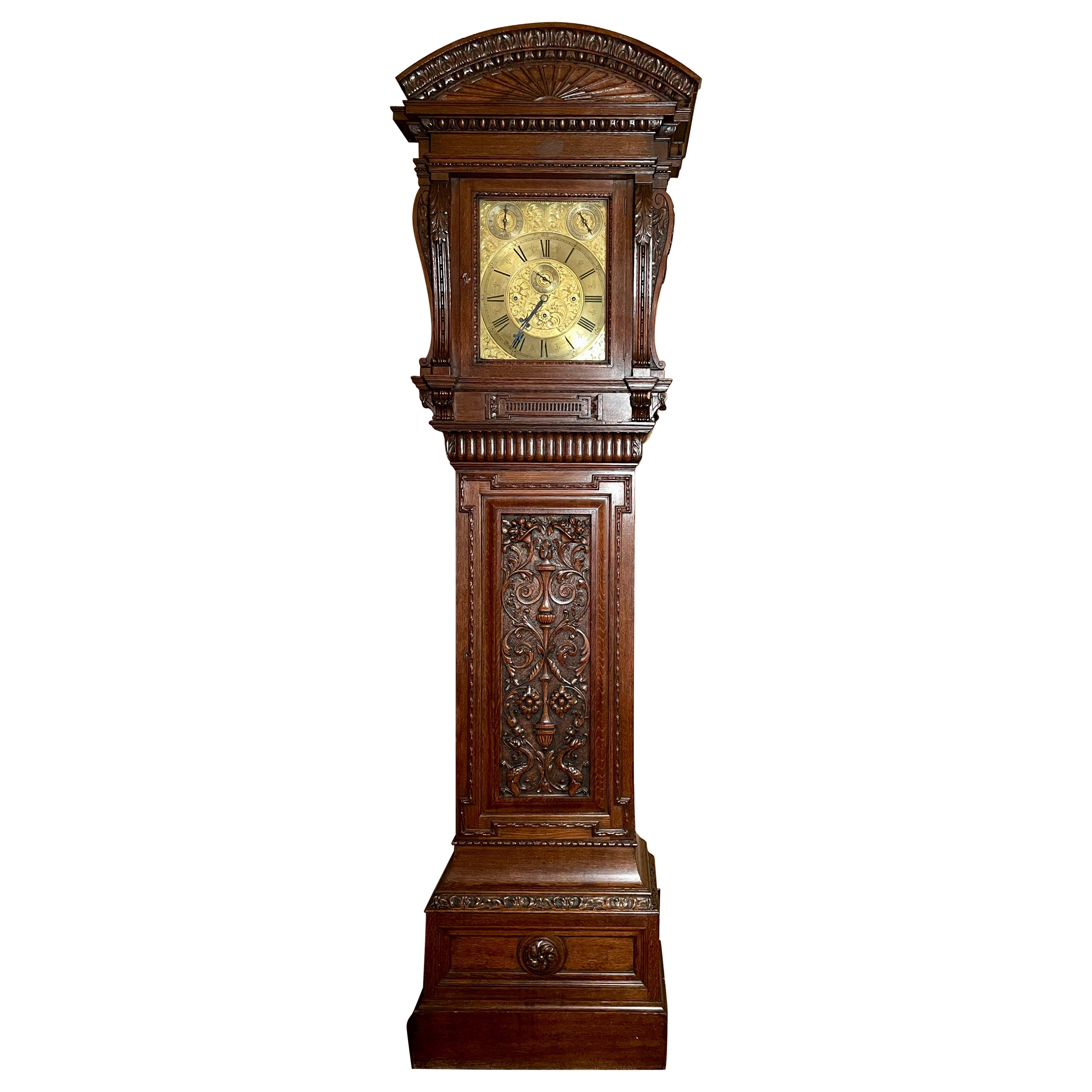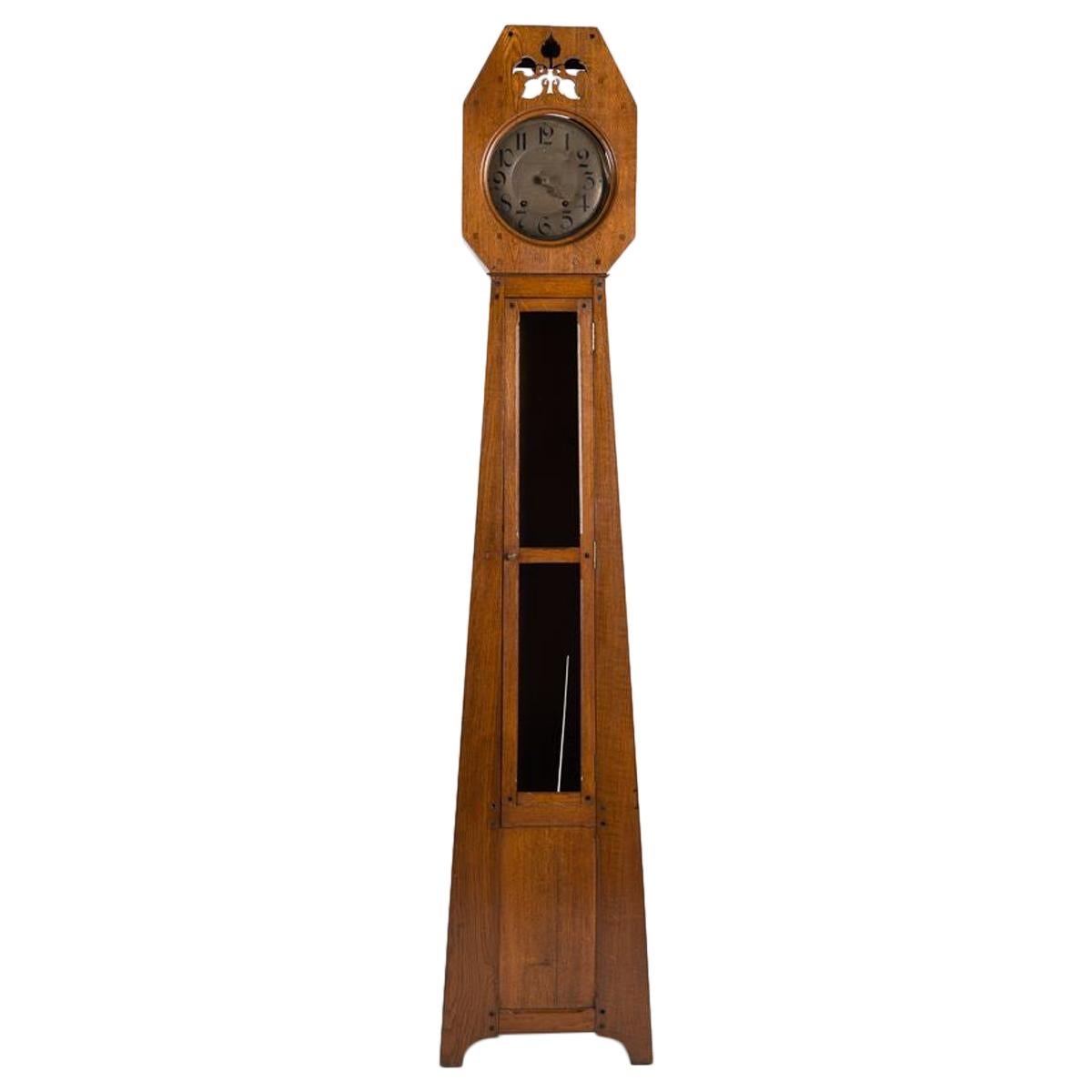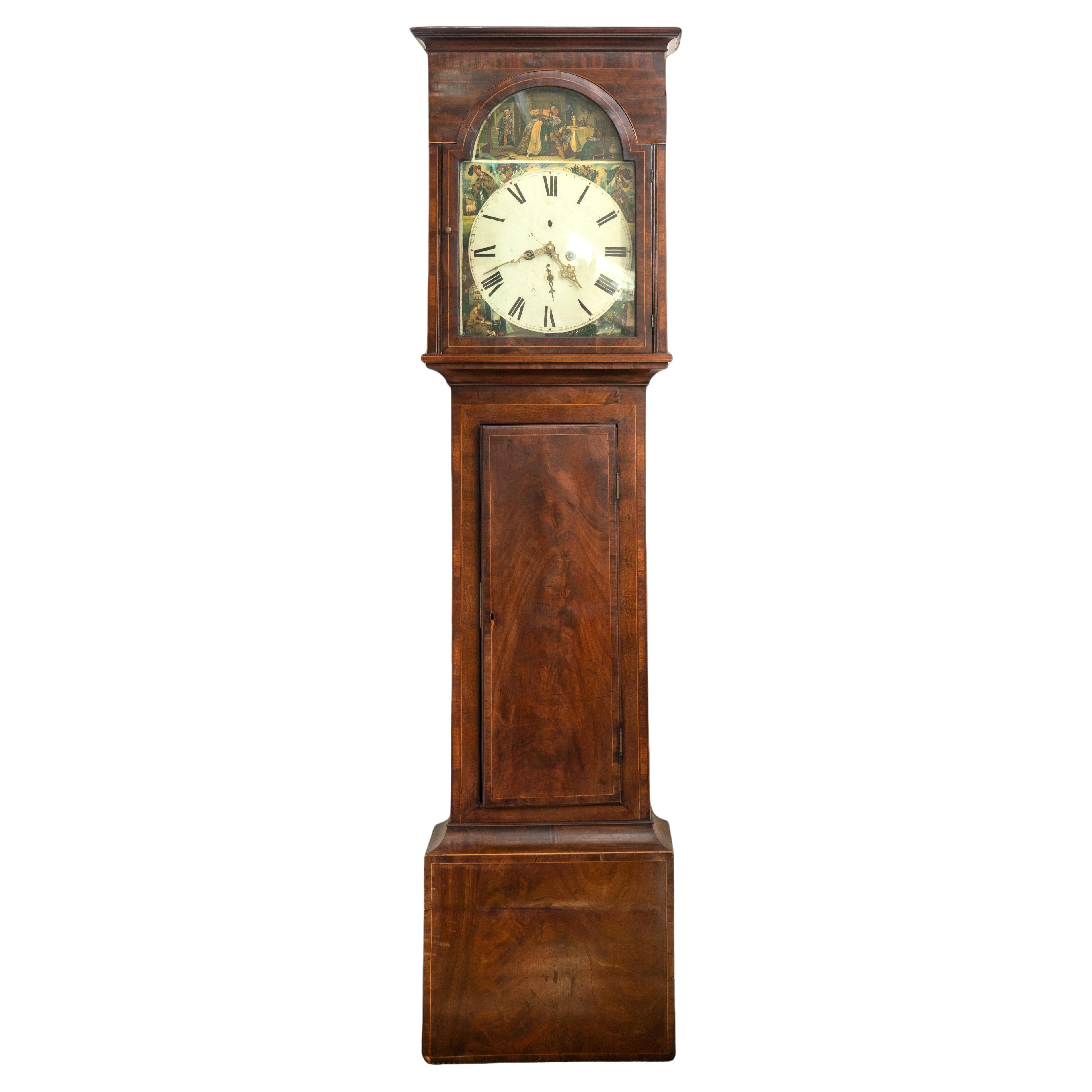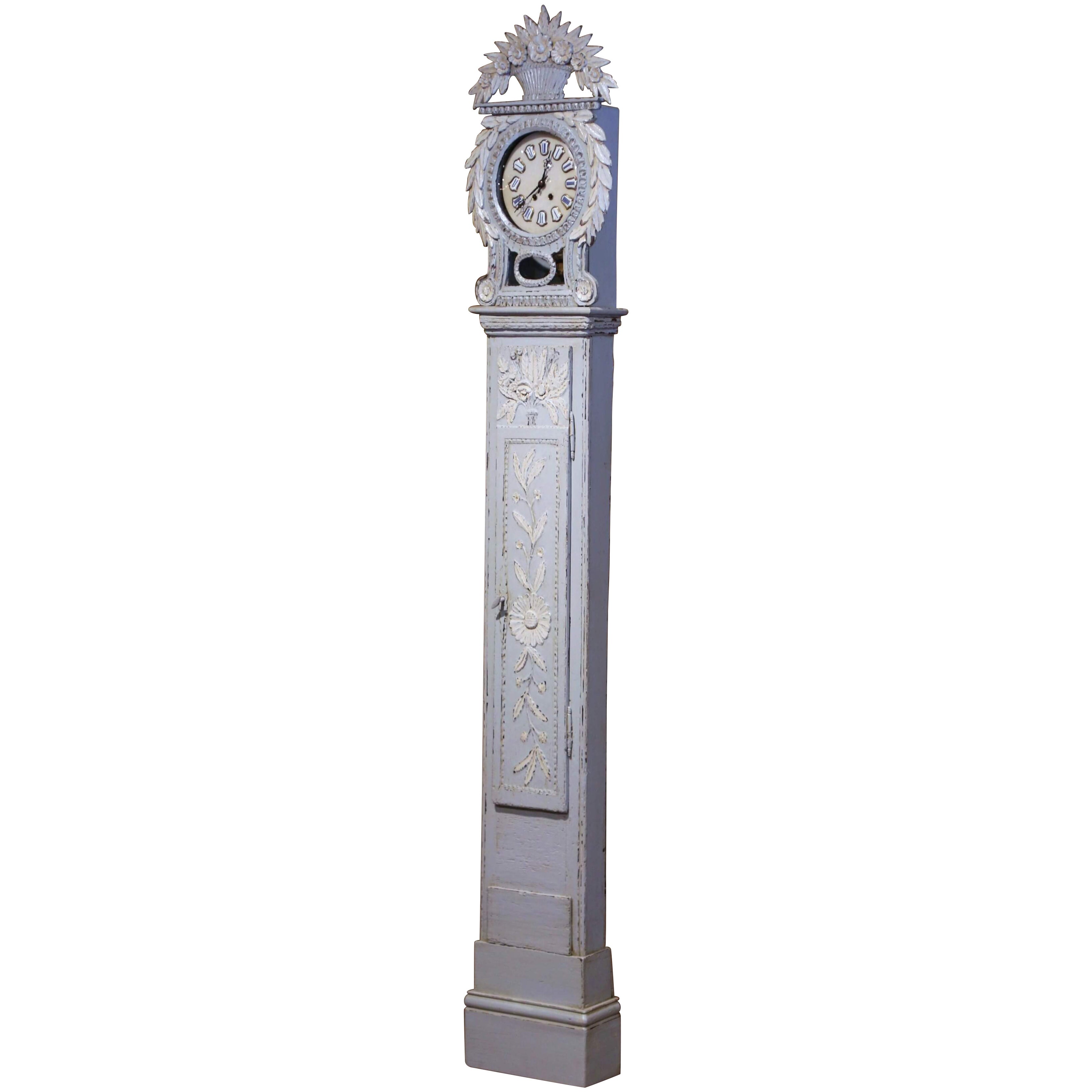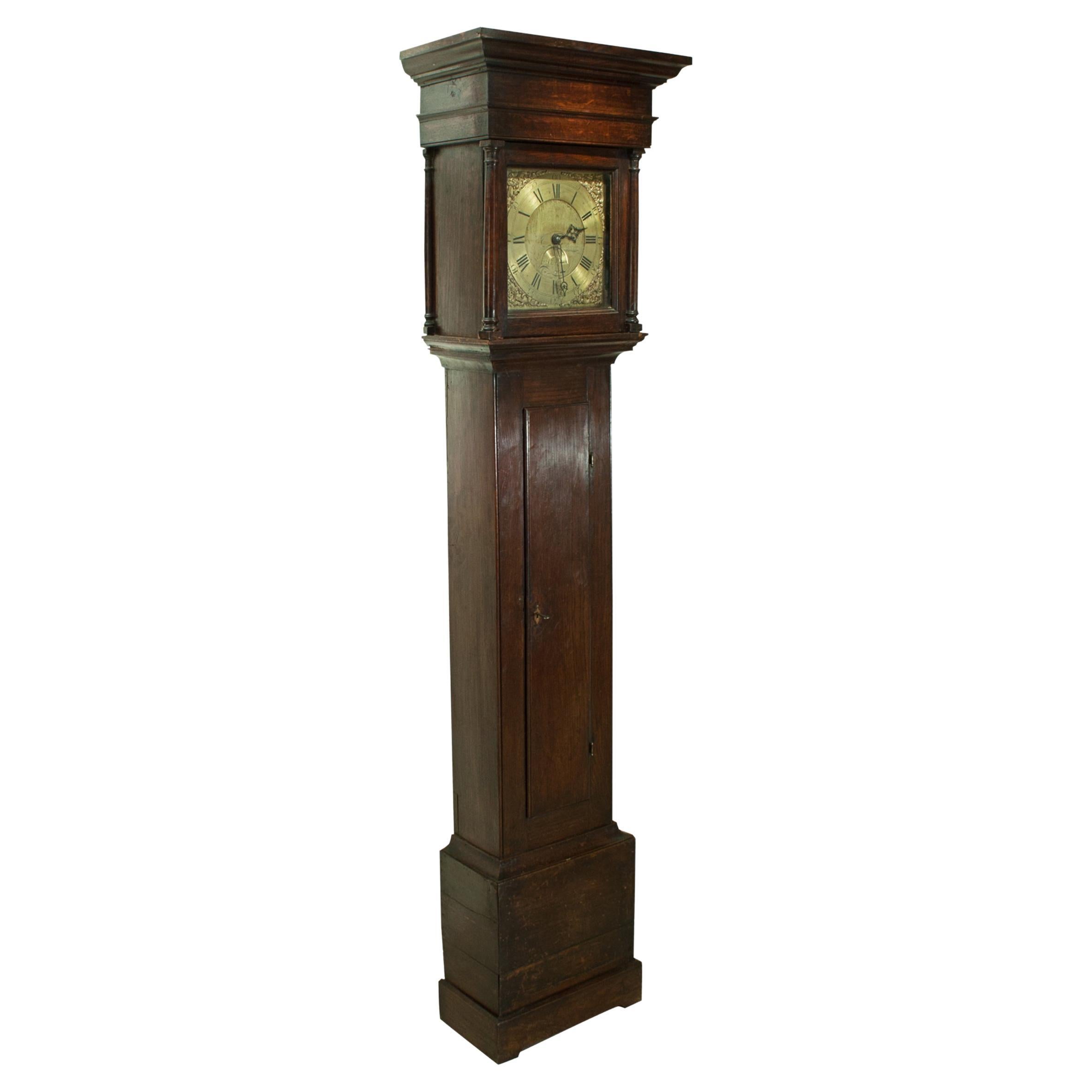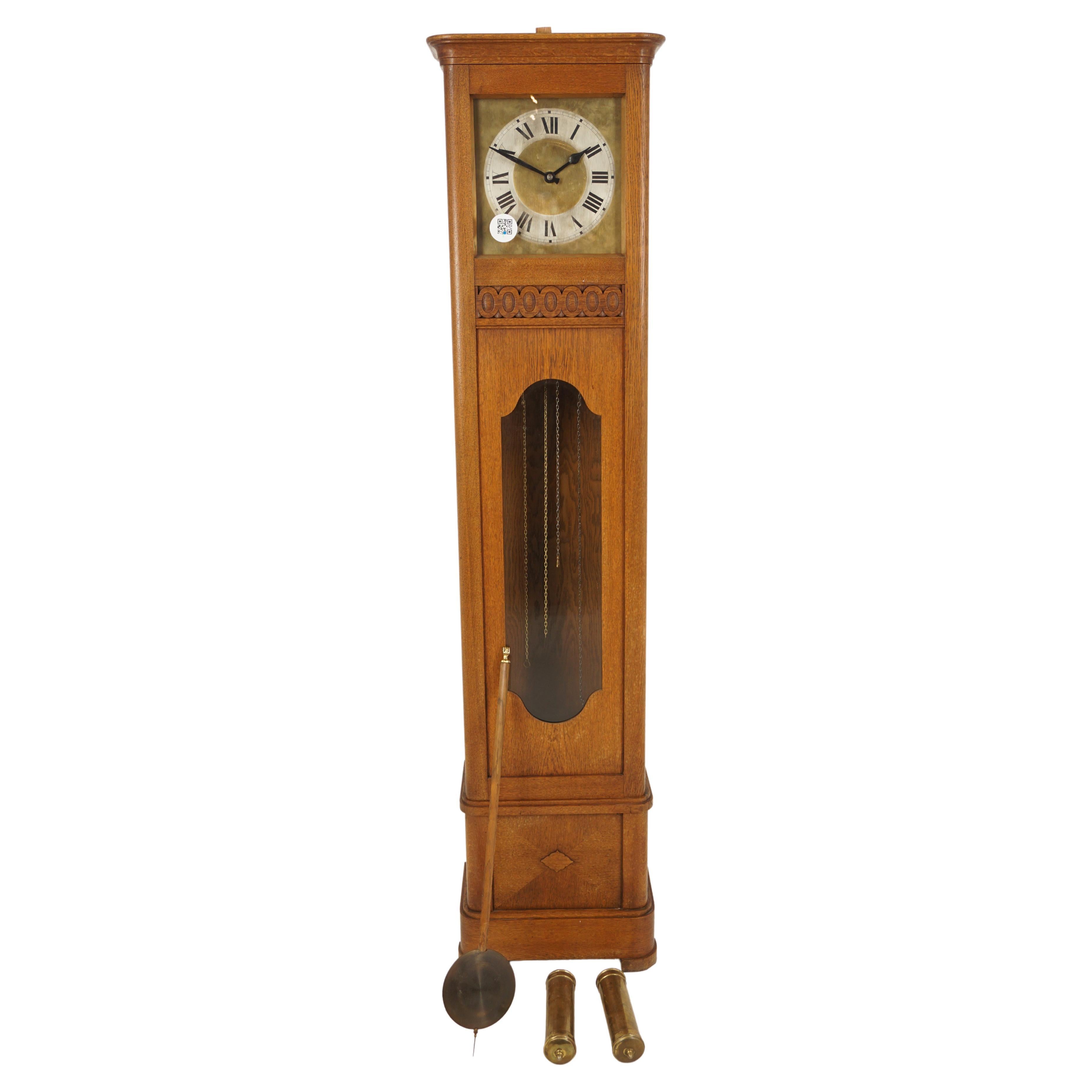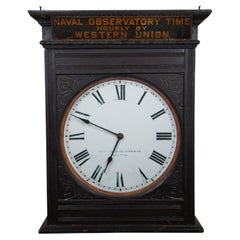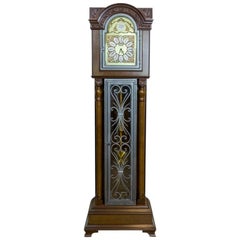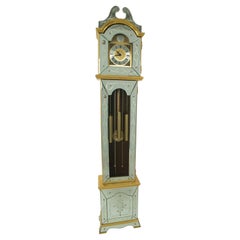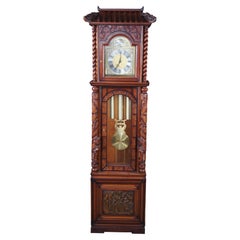
Vtg Japanese Dragon Carved Oak Tempus Fugit Pagoda Grandfather Clock Oriental
View Similar Items
Want more images or videos?
Request additional images or videos from the seller
1 of 13
Vtg Japanese Dragon Carved Oak Tempus Fugit Pagoda Grandfather Clock Oriental
About the Item
- Dimensions:Height: 77.5 in (196.85 cm)Width: 22.5 in (57.15 cm)Depth: 13 in (33.02 cm)
- Style:Japonisme (In the Style Of)
- Materials and Techniques:
- Period:
- Date of Manufacture:1970s
- Condition:Wear consistent with age and use. Good Vintage Condition; Gently Used.
- Seller Location:Dayton, OH
- Reference Number:Seller: 360561stDibs: LU5343231093942
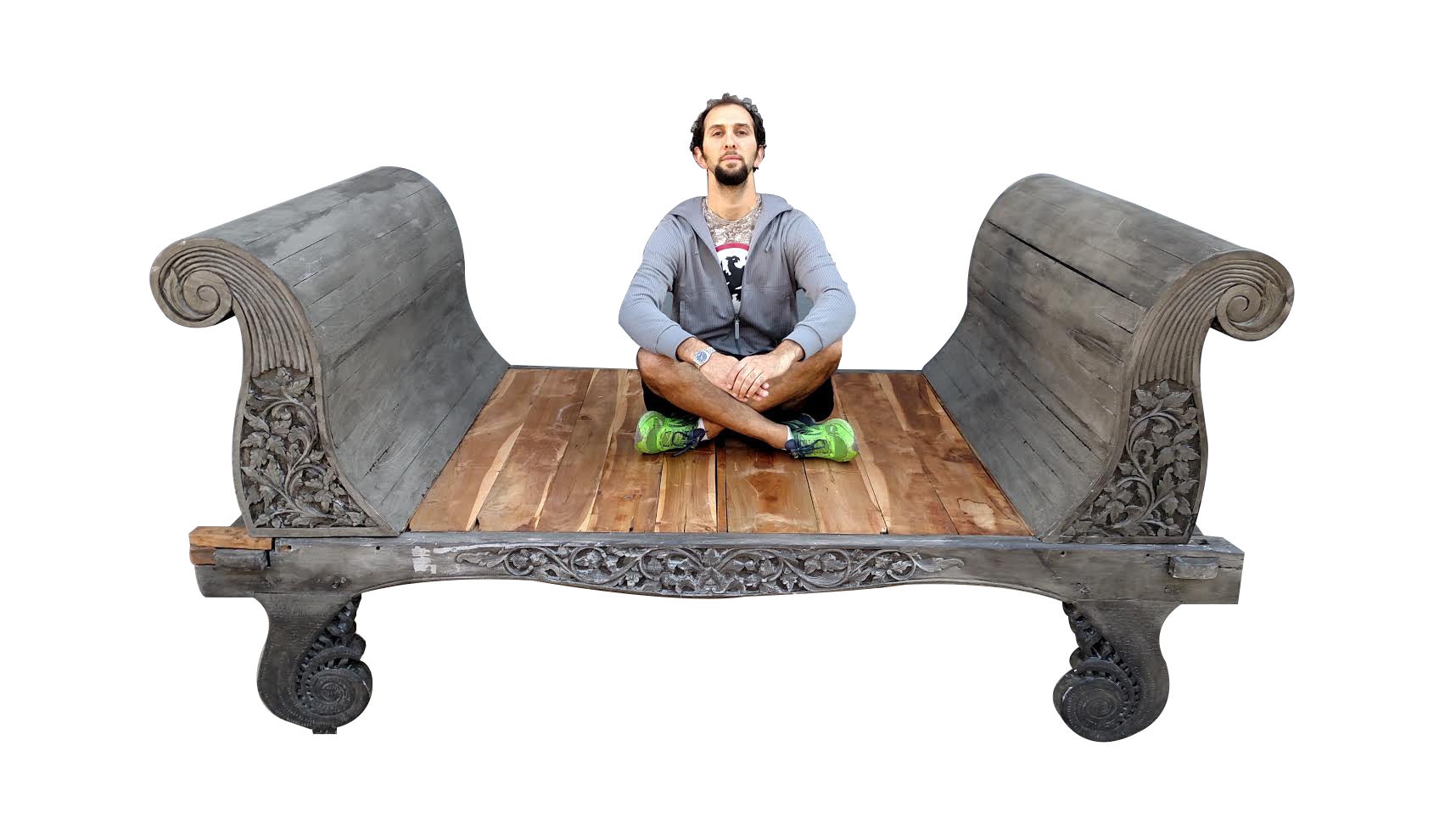
About the Seller
4.9
Platinum Seller
These expertly vetted sellers are 1stDibs' most experienced sellers and are rated highest by our customers.
Established in 2010
1stDibs seller since 2020
1,121 sales on 1stDibs
More From This SellerView All
- 2 Japanese Red Oak Dragon Carved Hexagonal Pagoda Vitrine Curio Display CabinetsLocated in Dayton, OHAn impressive pair of oriental chinoiserie hexagonal vitrine cabinets made in Okinawa Japan, circa 1970s. Made from red oak with three adjustable glass shelves, a pagoda form dragon ...Category
Vintage 1970s Japonisme Cabinets
MaterialsGlass, Oak
- Rare Self Winding Clock Co Naval Observatory Time Western Union Wall Clock 26"By Self Winding Clock Co.Located in Dayton, OHAntique Western Union, Naval Observatory Time, self winding clock. Features a tall wooden case with carved corners and pediment mounted with tin sign reading "Naval Observatory Time Hourly By Western Union. White metal face with black Roman numerals and hands. Interior of case labeled "Property of Self-Winging Clock Co New York" and serial number on metal tag as well as on works. F Style / Vibrator movement, Serial Number 92630 (likely manufactured before 1917). Patented Oct. 4, 1898 by the Self Winding Clock Company. Fitted with Archer AC Adapter. "The Self Winding Clock Company (SWCC) of New York began business in 1886 marketing their own electro-mechanical clocks based on the 1884 electro-mechanical clock patent of one of the company founders, Chester Pond (1844-1912). The innovative principle of this clock mechanism was the incorporation of a small electric winding motor that automatically rewound the mainspring after the clock ran for one hour. The clocks were powered by batteries. The batteries would last at least one year. By being automatically rewound each hour, the strain on the mechanism was kept to a minimum, resulting in a very accurate timepiece. At about the same time SWCC began selling clocks, Pond was developing an electro-mechanical synchronizer attached to the clock movement that could synchronize the clock hands to an accurate time source. The synchronization occurs when a remote, precisely timed, electrical impulse is sent via wires connected to the individual clocks. By 1887 the synchronizers had been so improved that the Self Winding Clock Company could not only market individual clocks but also sell entire synchronized clock systems. By the 1960’s the days of individual elegant mechanical timepieces and synchronized time systems were over. SWCC ceased operations in the late 1960’s. All company records and inventories were relegated to the trash pile. The STYLE “F”, or as commonly referred to, the VIBRATOR movement was developed by Frederick M. Schmidt in the late 1890’s. By 1898 the “F” movement was being installed in almost all SWCC clocks. The movement has a Graham dead beat escapement. The “F” movement incorporates both the time train and winding motor in one set of plates. The motor used a single pair of coils. It was more reliable and easier to service than the rotary movement. The mainspring is re-wound after running for one hour. The vibrating armature oscillates up and down carrying a winding lever with a pawl that turns the winding wheel. The “F” movement was used in individual clocks and in clocks that were part of synchronized systems. It was made in 60, 80,120 and 140 beat versions. There were virtually no changes to the movement in 60 plus years the movement was in production. Almost all Style “F” movements wound on 3 volts DC. Style “F” movement serial numbers started in the 33,000’s and the first movements were probably made in 1898. The earliest plates had patent dates of 1891, 1892 & 1898. Serial numbers with these patent dates go up to the 63,000’s and were made before 1908. By 1908 the plates only had the 1898 patent date. By using catalog images of movement serial numbers it can be concluded that movements with serial numbers up to 112,000 were made in or before 1917. Movements with serial numbers up to 196,000’s were made in or before 1929. The single patent date serial numbers go as high as 220,000’s. Then there appears to be a large numbering gap. Finally, movements appear with no patent dates and serial numbers with the prefix FR. These numbers start at 300,000 but only continue to about 302,000. Start again at 400,000 and continue to about 402,000. Based on the large serial number gaps, the total number of “F” movements manufactured is probably around 200,000. They were manufactured between 1898 and possibly as late as the 1950’s. SWCC both sold clocks to and partnered with their biggest customer, Western Union in a nationwide distribution of precisely accurate “Naval Observatory Time” clocks. These either 120 or 140 beat Naval Observatory clocks...Category
Early 20th Century Late Victorian Wall Clocks
MaterialsMetal
- Antique German Victorian Mahogany Westminster Kienzle Bracket Mantel ClockBy Kienzle ClocksLocated in Dayton, OHEarly 20th Century Kienzle key wound mantel clock with simple neoclassical mahogany case and floral etched brass face including controls for speed and chime above the clockface. Arab...Category
Early 20th Century Neoclassical Mantel Clocks
MaterialsMahogany
- Antique French Japy Freres Brass Champleve Enameled Cloisonne Mantel ClockBy Japy FrèresLocated in Dayton, OHAntqiue late 19th Century French Japy Freres gilt brass enameled mantel clock featuring neoclassical styling with polychrome champleve enamel accents, four columns with spire finials, beveled glass sides and trophy vase topper. Stamped with Japy Freres Medaille D'honneur stamp. Eight day striking movement. 9470. Made in France. Japy Freres was founded in 1806 by Frédéric and his sons. Frédéric Japy (1749-1812) was a pioneer in the ""art"" of industrialisation and manufacturing. Watches/clocks were made individually, by hand, by one or more people and then assembled. Japy Freres manufactured their clocks and watches in one place on a production line using machines...Category
Antique Late 19th Century Neoclassical Mantel Clocks
MaterialsBrass, Enamel
- Mid-Century Modern Atomic Abstract Chrome Starburst Memphis Sculptural ClockLocated in Dayton, OH"Freestanding chrome Metal Art sculpture clock. It features a dimensional starburst style with bright and bold graphic metal numbers in blue and white...Category
Late 20th Century Mid-Century Modern Grandfather Clocks and Longcase Clocks
MaterialsSteel, Chrome
$640 Sale Price20% Off - Antique Bronze Hirondelle Blessee Alfred Foretay Garniture Mantel Clock & UrnsBy Alfred Jean ForetayLocated in Dayton, OHAntique three piece set garniture clock made of bronze with green marble bases and gilt feet. Mantel clock features the sculpture Hirondelle Blessee by Alfred Jean Foretay above a gilt framed, white porcelain clock...Category
Early 20th Century Art Nouveau Mantel Clocks
MaterialsMarble, Bronze
You May Also Like
- Grandfather Clock Oak Longcase Chiming Tempus FugitLocated in Potters Bar, GBGorgeous English oak antique grandfather clock Lovely clock face with a small panel reading 'Tempus Fugit' - Latin for time flies Features a chiming mechanism Circa 1920 on this cloc...Category
Vintage 1920s Grandfather Clocks and Longcase Clocks
MaterialsOak
- 20th Century Tempus Fugit Grandfather Clock with a ChimeLocated in Opole, PLWe present you this big, contemporary grandfather clock by the Tempus Fugit company, stylized as an antique item. The clock has a chime...Category
Vintage 1980s German Grandfather Clocks and Longcase Clocks
MaterialsHardwood
$2,420 Sale Price20% Off - Venetian Etched Glass Tall Case Grandfather Clock, Giltwood, Tempus FugitLocated in Stamford, CTHollywood Regency style Beveled Etched glass tall case grandfather clock. This highly decorative Hollywood Regency style work of art has a Giltwo...Category
Late 20th Century Grandfather Clocks and Longcase Clocks
MaterialsBrass
- Antique English Carved Oak "Maple & Co., " 9-Tube Grandfather Clock, Circa 1890Located in New Orleans, LAGrand-Size Antique English carved oak "Maple & Co.," 9-tube grandfather clock, circa 1890.Category
Antique Late 19th Century English Grandfather Clocks and Longcase Clocks
MaterialsOak
- Léon Jallot, Oak Grandfather Clock, France, 1910By Léon JallotLocated in New York, NYAn magnificent clock with a floral motif dating from the early 20th century, and created by master ebeniste Le´on Jallot. For an illustration of a similar model, see: Duncan, Alastair, "The Paris Salons...Category
Early 20th Century French Art Nouveau Grandfather Clocks and Longcase Cl...
MaterialsOak
- Rosewood Grandfather ClockLocated in New Orleans, LAThis magnificent English longcase, or grandfather, clock boasts a fine rosewood case inlaid with an intricate, balanced design. The face is crafted of chased silver in a foliate motif with fully hallmarked numerals by London silversmith James Stedstone Gouldsmith. The clock is a three-train movement run by three silver-plated weights and a mercury pendulum. The three weights power the time, the hour chime and the quarter-hour chime, and the clock strikes on nine tubular bells with a choice of either Whittington or Westminster chimes. Known commonly as “grandfather” clocks, it was not until the late 19th century that longcase clocks garnered this name. According to the origin tale, two brothers named Jenkins owned the George Hotel...Category
Antique 19th Century English Grandfather Clocks and Longcase Clocks
MaterialsSilver Plate, Silver
$98,500
Recently Viewed
View AllMore Ways To Browse
Vintage Japanese Dragon
Vintage Grandfather Clock Grandfather Clocks
Vintage Grandfather Clock Clocks
Japanese Carved Dragon
Vintage Chiming Clocks
Vintage Chiming Clock
Vintage Chime Clock
Retro Grandfather Clock
Geisha Study
Japanese Vintage Geisha
Vintage Grandfather Clocks
Vintage Longcase Grandfather Clock
Vintage Longcase Clocks
Post Office Window
Pagoda Clock
Chinoiserie Longcase Clocks
Oriental Clock
Okinawa Vintage
